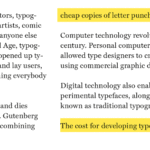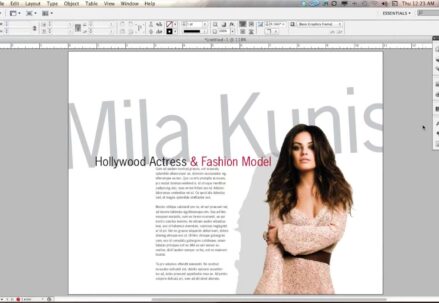Launching a new brand and finding a unique identity for it can be a daunting task. Establishing the brand’s visual identity is one of the first crucial steps. As a designer, where do you begin? What type of logo should be considered?
Let’s embark on a journey to unravel the different types of logos and their unique attributes, considering both new and established brands.
Pictorial Symbols
These are visual narratives of the brand that offer a window into the company’s story or products. These symbols, while leaning more towards the illustrative side, boost recognition and uniqueness. However, for fledgling brands, pairing the name with a pictorial symbol (combination logo) can boost recognition and build brand equity.
Letterform Logos
Ideal for brands with lengthy, complex names or acronyms, letterform logos often encompass monograms and letter marks. These are usually a tad pictorial or stylized, making recognition easier.
Emblems
Emblems exude a sense of formality, especially when crafted into a badge or seal shape. However, if not aptly designed, they can be tricky to decipher at small sizes, owing to the bundling of numerous elements within the shape.
Wordmarks
Wordmarks or logotypes, often the most enduring logo types, incorporate the company name in a distinctive style. When designing these, readability is as crucial as recognition. The exception is when crafting a script or signature, that leans towards a personalized touch or denotes a lineage.
Abstract Symbols
These symbols, more efficient at expressing ideas than words, are quickly processed by the brain. They also defy linguistic barriers, making them ideal for global companies. Just like pictorial symbols, new brands should pair the name with abstract symbols to build brand recognition and equity.
Characters/Mascots
Rooted in pictorial symbols, characters were first embraced by sports teams. Through the creativity of Leo Burnett, they later became staples of household brands in the mid-20th century. Characters add personality and offer an identifiable face to the brand. Sometimes they are integrated into the primary logo while at other times they appear as a brand asset in certain instances.
Design Considerations
When working on new identity projects, aim to present at least two options from the types outlined above. This diversification demonstrates a profound exploration of possibilities and that there is rarely a single solution.
Presenting Logo Options
- Understand the brand’s values, mission, and target audience;
- Spot the unique selling proposition and highlight it in the logo design;
- Experiment with different types, such as pictorial symbols, letterform logos, and wordmarks.
Considerations for Small and Large Companies
Smaller companies might find pictorial combination marks, emblems, and wordmarks suitable. On the other hand, larger enterprises might consider abstract symbol combination marks and wordmarks. Future applications of the logo should guide the choice. For instance, if a logo is to be embroidered on apparel or printed on golf balls, a character symbol with tiny details might not be the best choice.
Logo Design in the Digital Age
In today’s digital age, logos must be adaptable and scalable across various platforms and devices without losing their allure or readability.
- Focus on adaptability for different screens and sizes;
- Ensure your logo maintains its integrity in black and white variations;
- Test the logo’s visibility and impact on different social media platforms.
The Influence of Color in Logo Design
Color can greatly influence a brand’s perception, emotions, and even consumer behavior. It’s essential to understand the psychology of colors and their potential impact on your target audience.
- Choose colors that align with the brand’s personality;
- Test different color variations and consider cultural connotations;
- Keep in mind color accessibility for those with visual impairments.
| Logo Type | Key Features | Best Suited For | Considerations |
|---|---|---|---|
| Pictorial Symbols | Illustrative, story-based representation | Brands with strong visual narratives | Pair with brand names for new brands |
| Letterform Logos | Monograms or stylized letter marks | Brands with long or complex names | Design should aid recognition |
| Emblems | Contained in a shape, badge or seal-like | Formal or institutional brands | Ensure legibility at small sizes |
| Wordmarks | Unique stylized company name | All types of brands | Balance legibility with creativity |
| Abstract Symbols | Universal symbols, language barrier-free | International companies | Pair with brand names for new brands |
| Characters/Mascots | Identifiable face, adds personality | Sports teams, household brands | Ensure detailing does not hamper legibility |
Conclusion
Designing a logo that stands out requires understanding the client’s vision, brand mission, and intended target audience. The journey starts with choosing the right type of logo and ends with critical details like color selection and adaptability across platforms.
There’s no one-size-fits-all in logo design; it’s all about practicality with a dash of creativity that encapsulates the brand’s essence in a captivating manner.




